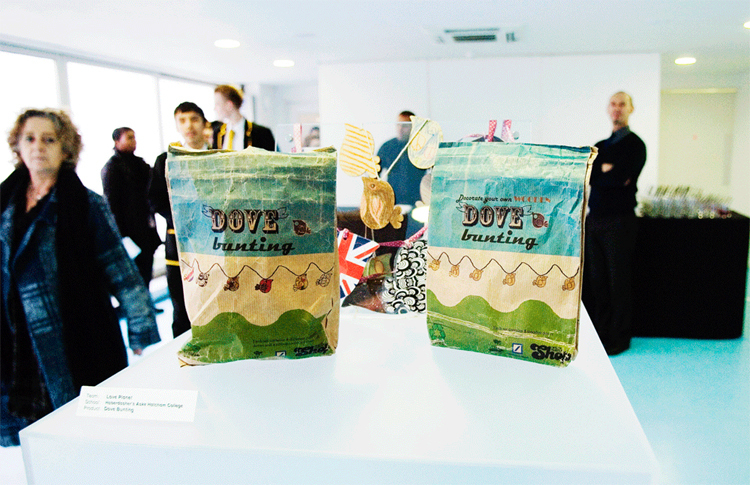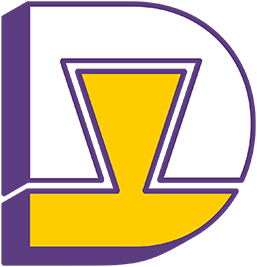Resources Index
-
Design with environment in mind
To consider and control both environmental and social aspects at the moment of designing can be a very hard job, but here are my top design products to inspire you:
1. Reducing the amount of different materials used makes the product easier to recycle. This lamp uses only cork and metal, no screws nor glue.

2. Using locally sourced materials reduces the negative environmental impact caused by transport and boosts local economies, usually improving social development. These containers were made in Mexico using the fiber of an edible fruit that grows from a vine that grows in the area.

3. Considering standardised measures of materials can generate less waste. This desk was designed using one sheet of plywood with very little wasted.


4. Making use of recycled, recyclable or biodegradable materials will reduce the environmental impact. This water container is made of recycled paper, which is easier to recycle than plastic.

5. Painting a material usually complicates the recycling process. It’s nice to take advantage of the natural appearance of materials. This cube toy was designed taking advantage the natural beauty of the material.

6. Looking after fair trade conditions will promote that products are developed in an environment that ensures decent working conditions and fair remuneration for workers. This means that a socially responsible product will improve the overall quality of life of the people involved with it. These baskets were made by indigenous people of the Philippines using traditional basket weaving techniques, with local materials upcycling old plastic containers. This project was made to boost this certain community.

7. Designing for disassembly will help the people in charge of recycling the product making all parts easy to pull apart. This can be achieved by avoiding the use of adhesives to bond materials of different types. Mechanical joints are always better, like this wooden stool that uses no glue and no screws, it structures it self by the way it was designed.

8. Giving a second function to a product causes the product to extend its use stage. This bottle cap doesn’t have to go in the garbage. It can be a toy instead.

-
Prototyping – Making Ideas
Now your team has an idea or even more than one. Time to test your ideas. Get making; prototyping; take your idea from a sketch on a page to something you can hold in your hands. Then you have something to show people – use their comments to help you make your idea stronger. Use anything: paper; cardboard; stick together other objects. Prototyping can be scary at first, but it gets easier the more you do it. And once you do, you will want to prototype every time you design.
Below are some of great prototypes. Notice none of them are complicated or anything like the finished product.


Bowtiful bow tie – http://bowtifulties.com/2013/03/bowtiful-packaging/


Supersoaker – https://en.wikipedia.org/wiki/Super_Soaker_50


Dyson vacuum cleaner – http://www.core77.com/gallery/vienna-design-week-2010/23.asp and http://www.dezeen.com/2013/07/26/dyson-launch-smallest-vacuum-cleaner/
-
What makes a good idea great?
Enterprising ideas: Simple ideas with big appeal – what makes a good idea great?
Explaining what makes a good idea great is tricky, first it’s understanding what makes a an idea ‘great’ in the first place.
Personally, I think it’s an idea which makes you smile, it captures your full attention, you immediately ‘get it’, you value it’s cleverness, usefulness or sheer beauty.
You don’t have to be an experienced designer to hit upon a great idea, the process gets easier with experience, years of brain training! But with applied dedication, curiosity, perseverance and imagination anyone can come up with that winning idea. It’s all about having an open, enquiring mind. And, the time to properly consider and develop your thinking into strong concepts.
Remember, everything’s been done before, it’s about learning from what’s been done and making things even better. A completely innovative, fresh new idea will always stand out, that’s what you should strive for.
To be really ‘great’ the idea really has to answer the brief in the most succinct way, the simpler the better.
-
Why Prototype?
You have begun to formulate and develop great ideas for unconventional, innovative and eye catching products. You’ve researched your target audience and their wants and needs, you’ve researched the Design Museum shop and your direct competitors. But how do you really make sure your design idea will work when it is produced?
In order to ensure product designs will be successful, manufacturing needs to be considered right from the first step of the design process. This also means thinking about:
Materials – what will the product be made of and where do I source these materials?
Production – how is it made?
Functionality – will it work in the way I intend it to?
Aesthetics – will it look the way I want it to?
Budget – will all of my requirements fit within the Design Ventura product budget?A good way to begin exploring the manufacture of your product is to begin prototyping.

Making mock-up examples of your products early on in your design process will give you an immediate insight into whether your product will work, or if you need to simplify your design, change your material or use a different manufacturing process.

Sometimes it is easy to get carried away with a great idea, but when it comes to manufacturing, it doesn’t work. Prototyping will give you the chance to look at manufacturing in the early stages of design. If you can identify potential production problems in the prototyping stage, you will have more opportunity to develop your design and solve these issues, ensuring your Design Ventura product is the best it can be!
Read more about another designer who designs by making here: http://www.designsojourn.com/rethinking-the-hairdryer/
This blog has been illustrated with some examples of prototypes made by Beal High School students during a Design Surgery workshop at the Design Museum with Museum Educator Lea Jagendorf, Design Industry Expert Wyn Griffiths and Business Industry Expert Nada Milanovic.
-
Top tips from lead teacher of the 2010 winning team
Initially advertising for year 9 pupils to enter Design Ventura, Miss King, Head of Design and Technology, offered to “inspire them about the world of design and increase their interest in the subject”. Having sustained an enthusiastic response, the competition kick-started with some off-timetable sessions and a few meetings squeezed in over lunchtimes, nourished with plenty of biscuits and juice to help get the ideas flowing.

“Overall the students were very engaged in the project and with the visiting experts who came in to the school for the Hothouse sessions. They worked with the teams and explained about the finance, marketing and design elements.” By encouraging the pupils to consider themselves as both young designers and the target market, the students quickly began to develop ideas about what would sell in the Design Museum Shop.
Miss King had a difficult choice to make deciding which idea would progress in the competition, “I really had to consider what we were able to produce in school with the resources that we had available to us”. Taking into account the variety of products already available in the Design Museum Shop, it was concluded that the final submission must be “the most suitable product” and would show careful consideration of the target market, in addition to the issues of affordability and sustainability. Dove Bunting was eventually chosen as the winning product as it held “appeal to a range of ages” and was a memorable item. The Dove Bunting also had a unique selling point, a DIY element that “enabled the person buying it to make it personal to them”, this showed the young designers has shown consideration for the target market and researched current consumer trends. The “simple but very eye catching” packaging fitted well with the sustainability issues within the original design brief.
With a successful and professional performance at the Pitching Event in January Dove Bunting scooped the overall prize and is now in the initial stages of production in preparation for being stocked in the Design Museum shop this August.
“We were really delighted that the product was chosen as the winner of Design Ventura, and the team are now involved with developing the product for production and to sell in the museum shop. The school is very proud of the girls’ success and is celebrating their achievement in assemblies.”


